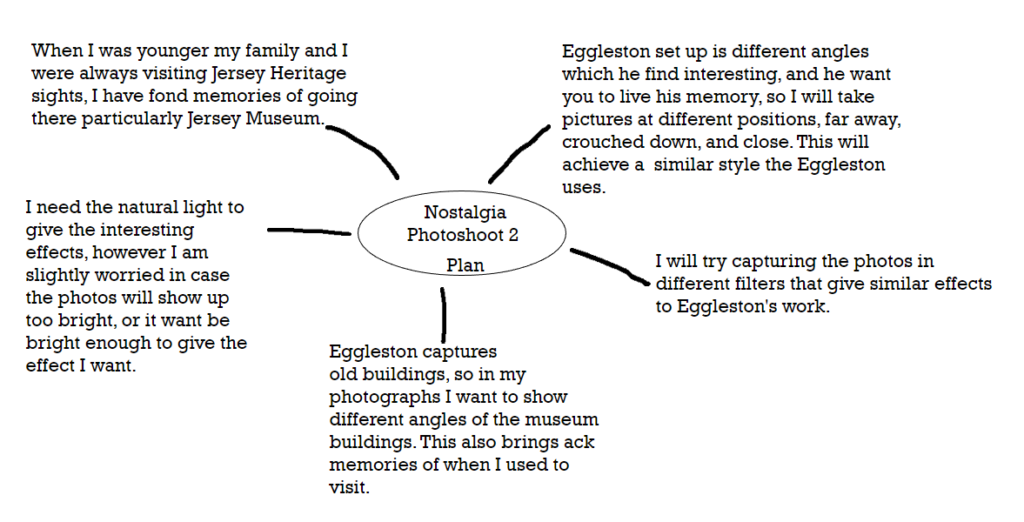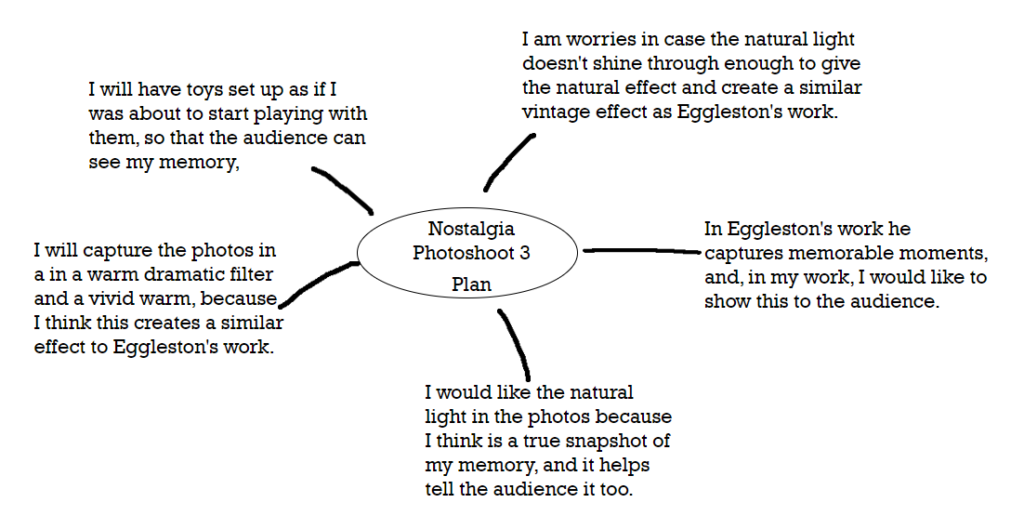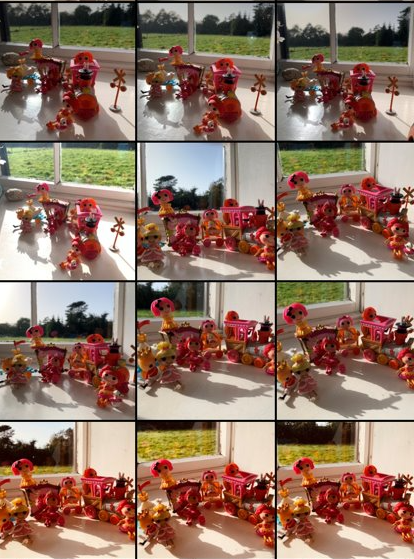William Eggleston
Eggleston began his work by taking snapshots of the world changing around him during the 1940s and 50s, where he lived in South America. Eggleston was fascinated by the cultural shift, so he began capturing this on his camera; cars, shopping malls, and new suburbs. During the 70s he wanted to experiment with colour, he wanted an in-depth saturated colour, so to achieve this he began to experiment with dye-transfer. Eggleston captured things that were happening around him such as, drugs, booze, guns and women, he experimented with Polaroids, automatic photo-booth portraits, and video art, but became particularly inspired by Pop art and how it was advertised with bright saturated colouring and how it was displayed. I have chosen Eggleston because I love his simple but effective snapshots he captures, I like how each photograph has its own unique composition and style, each expressing their own story

William Eggleston style is documenting his life, he shoots from unexpected angles or when people are looking away, this shows a more realistic view on his photographs as they portray a more meaningful and engaging message.

Eggleston captured the present day as he wanted to show this in his photography, his iconic work is captured in South America, where he was born. When he began experimenting with colour, Eggleston also combined his new style with Southern Gothic imagery. I think Eggleston’s work is mainly fact, as he captures his current memories. However, his work is a perfect example of Southern Gothic imagery because his work has a vintage theme, with colour that brings it to a more modern print but still is old.
Eggleston’s work really inspires me as I love the snapshots he captures in his day-to-day life; I like how each photo has a unique formation and how each one shows a different memory or experience.


My Ideas:













These images are my favourite because I love how each shows my memory of playing with the toys in different ways. I was inspired by Eggleston to keep the set up simple, which also has an interesting effect as it shows nostalgia. For the first photo, the dramatic warm filter exaggerates the train giving that nostalgic theme of being in the past. It brings back the memory for me but also for the audience, as they get an insight into my memory.
Final 3 Images:
For the second photo, I used a lightly brighter filter to elevate the natural light and the shades created. This is like Eggleston’s work as he captures his photos from the natural light. I really like this effect as it shows what I saw in that moment.

For this photo I decided I wanted to create more of a focus point. The cut-out shape explains more of what my memory was because it is showing you the story.
For this photo I didn’t angle the camera. This was because I thought it was an interesting position to capture, as it shows a more focused and direct snapshot. I used the same dramatic warm filter and I think it engages you from a different perspective, having the photo at a different point of view.
I used vivid warm for the filter; I captured this by crouching and at an angle. This was because it created an interesting composition which showed the building from a different angle. I think this is effective because it has a more in-depth and intricate look as this draws you into the picture catching your full attention.
Final Photo

Here is my final photo, the filter is dramatic warm. I chose this image because by looking at the photo it reminds me of my memory of baking. I was inspired by Eggleston’s work, and the vintage style he uses. As he uses dye-transfer I thought I could create this in my own way by adding the dramatic warm filter, where is gave a similar effect. It gave it the vintage style I was hoping for and had dark areas which really highlights the focus point. I like how is an old rustic style, but still has a lot of colour. The tones created by the filter compromise each other, as together they create a unique photograph. Overall, I am really pleased with the result, because it showcases nostalgia as I am instantly reminded of my childhood. I think this engages the audience as it tells them a story of my memory, like Eggleston’s work does.




Good start…but you can improve your blog by adding the following
1. A blog post that explores camera handling skills and lighting techniques that we have used. The Canon camera simulator examples are useful for this too.
2. More description and analysis of images (your own and others) in each blog post that has only images
3. A blog post that clearly shows your initial images in lightroom (like a contact sheet)…this can highlight your selections too (as well as edits)